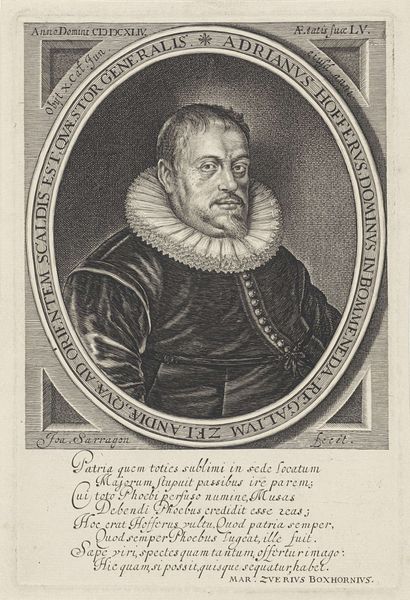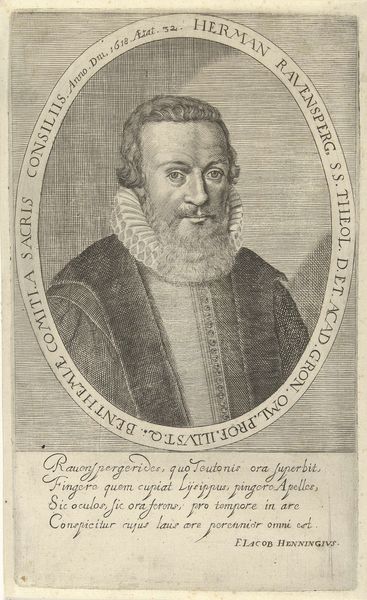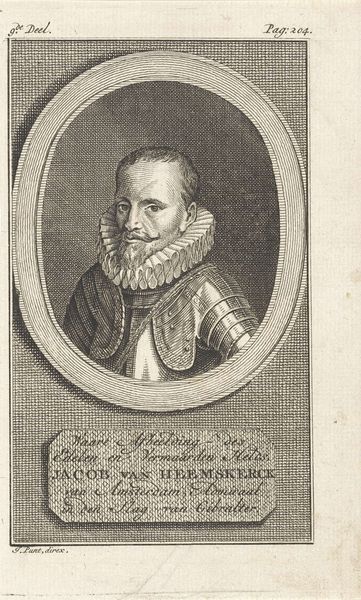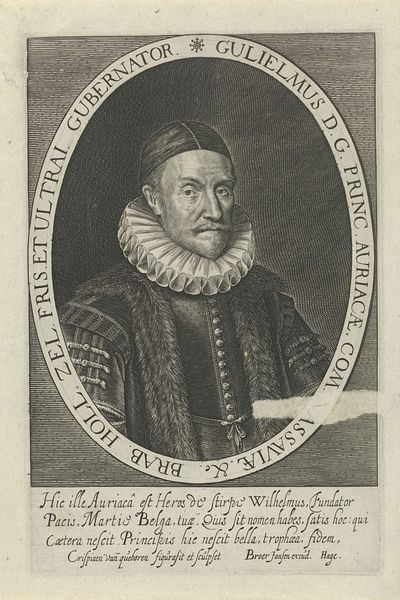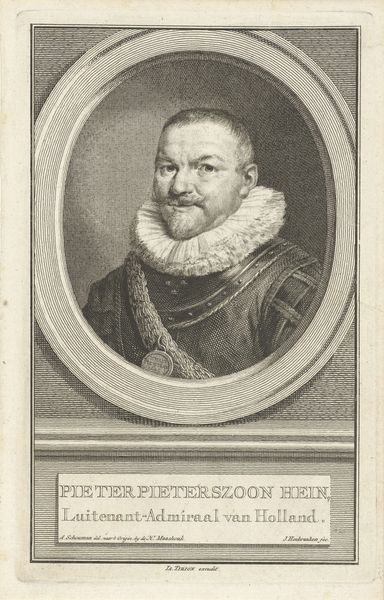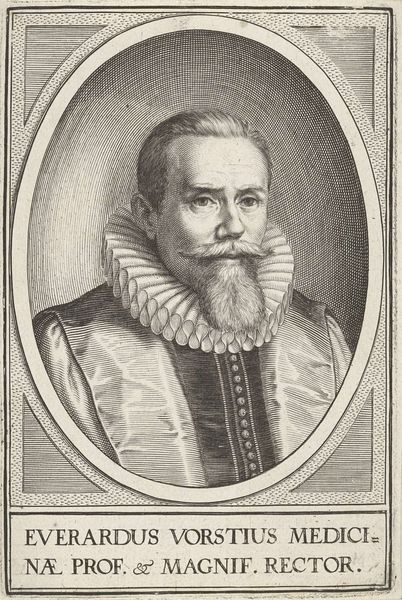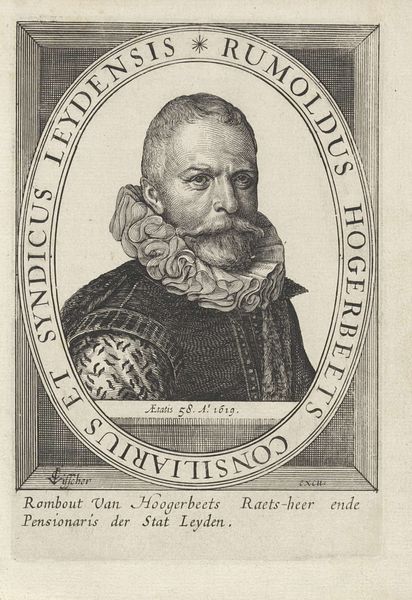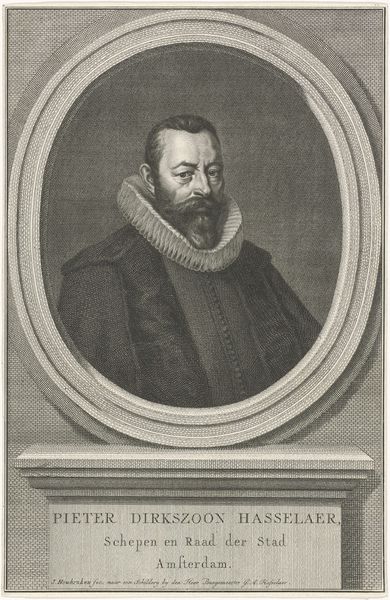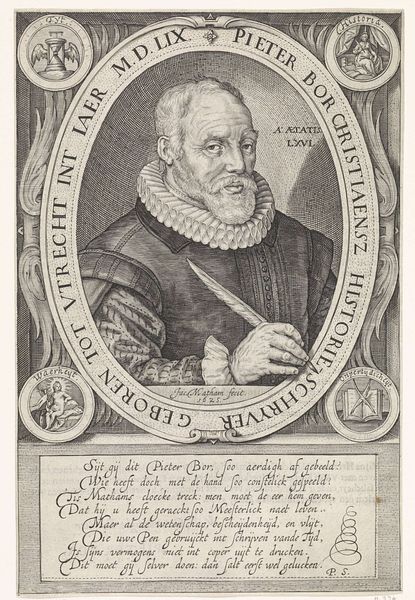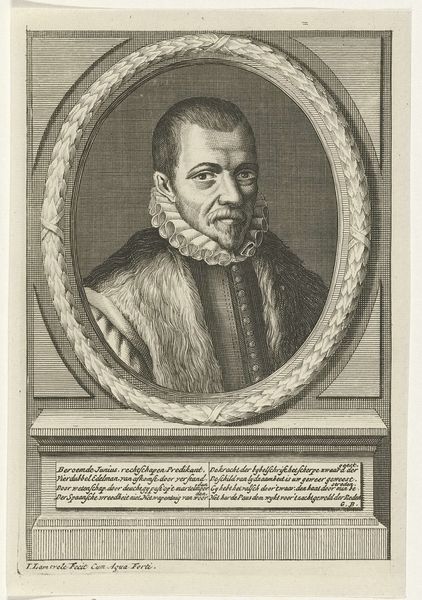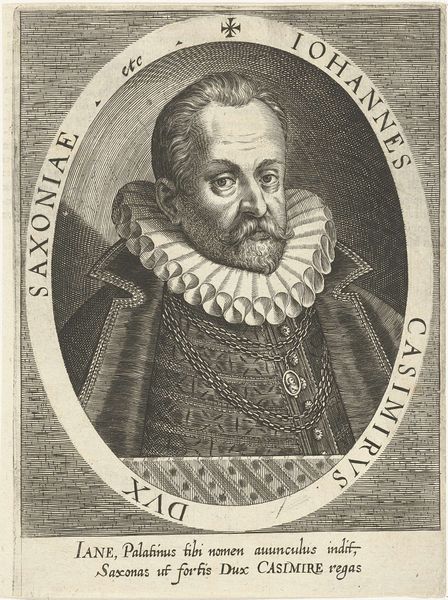
engraving
#
portrait
#
baroque
#
form
#
classicism
#
line
#
history-painting
#
academic-art
#
engraving
#
realism
Dimensions: height 156 mm, width 103 mm
Copyright: Rijks Museum: Open Domain
Editor: Here we have Simon van de Passe's "Portret van Johannes Meursius," an engraving from 1631 currently housed in the Rijksmuseum. It's striking how contained the figure is within the ornate frame. What social or political statements can we interpret from it? Curator: It’s crucial to remember that portrait engravings like this were not simply aesthetic objects. Consider the inscription surrounding Meursius: it declares his titles, associations, and beliefs. Who had access to such declarations, and what social power does this portrait affirm in its claim to eternality? Editor: That's interesting! The inscription feels almost performative. It definitely shifts my perspective. How does this tie into broader themes of identity in the 17th century? Curator: Identity during this era was deeply enmeshed with patronage, status, and intellectual affiliations, wouldn't you agree? Notice how Meursius is identified as the Danish King’s historian, with the implication being not merely description but also promotion. Whose gaze is privileged in its consumption of this kind of portraiture, and to what socio-economic class might that gaze have belonged? Editor: So, you are saying that in effect the work is an example of art reinforcing power structures? Curator: Precisely. The visual language employed served to consolidate social hierarchies. Also, the very act of creating and circulating this print served a specific cultural and political purpose: reinforcing the sitter's position within society, and acting as a form of cultural capital in its own right. The portrait speaks not just to individual identity but to the broader social fabric. Editor: This reframing really helps to understand how this artwork goes beyond being just a likeness of a person. Thank you. Curator: And thank you, for recognizing the embedded political narrative, and by extension seeing how crucial it is to understanding works within art historical movements.
Comments
No comments
Be the first to comment and join the conversation on the ultimate creative platform.
